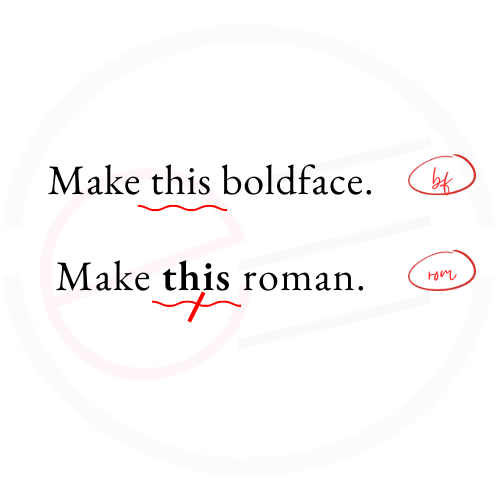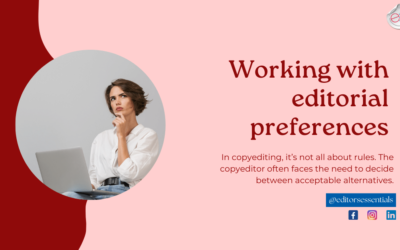Three common types of formatting followed in the publishing industry are italics, boldface, and underlines. In a previous post, we discussed the role of italics in formatting text. In this post, let’s discuss some occurrences where boldface is used.
Headings
As you know, a manuscript can have several prominent headings (first-level headings), under which several subheadings are presented. Usually, first-level headings are differentiated from the next-level ones by means of formatting, such as using a larger font size and boldface.
Some frequently occurring first-level headings in scientific writing are abstract, introduction, materials and methods, results, discussion, and references.
Items that contain both phrases and sentences
When bulleted items contain headings, the word or phrase at the beginning of the bullet is usually set in boldface. A common example is glossary.
Example
goal: the end state towards which a human or nonhuman animal is striving. It can be identified by observing that an organism ceases or changes its behaviour upon attaining this state.
Components of a table or figure
The table number or figure number (e.g. Table 2.1) that appears above a table or figure is usually set in boldface. Furthermore, some publications prefer to use boldface for column headings in tables.
Boldface can also be used to add emphasis to values or pieces of text in tables. Such usages should be defined in table footnotes. However, make sure that the requirements of the publishers are adhered to.
Example
Table 2.1 Statistical analysis of variables representing the heterogeneity of the sample
Chemical compounds
In manuscripts that deal with chemical compounds, instead of repeating the names or formulas of such compounds, boldface numerals can be assigned to each compound. These numeric identifiers are common in text; chapter or article titles seldom have these identifiers (understandably because the compound will only be defined later in the text).
Example
This study discusses the syntheses, structures, and properties of hexacoordinate silicon complexes 1–4.
Vectors and matrices
Boldface is used to denote vectors and matrices, as well as multidimensional physical quantities such as H (which denotes magnetic field strength).
Example
The transpose of the sum of matrixes A and B is the sum of the transposes of A and B.
Greek letters
While using Greek letters to denote variables, constants, or vectors, either boldface or lightface may be used, but the usage should be consistent throughout the manuscript.
Example
Cronbach’s α is a reliability coefficient and a measure of the internal consistency of tests and measures.
ChemSet notation
In cases where a structure number is followed by the reagent sets associated with it, the former is set in boldface, and the latter in italics within curly brackets.
Example
4{1–5,1–4,1–6}
An important note
The information presented above is based on general conventions collated from different style guides, which may or may not apply to all publishers. Hence, before applying these conventions to a manuscript, understand the publisher’s requirements and make sure that implementing these conventions do not violate publisher requirements.

And a trivia: During the era of hardcopy editing (that is, editing on paper using a pen), a wavy line is drawn below a word or phrase to indicate that this part needs to be set in boldface. Additionally, the copyeditor may include a marginal mark, by writing “bf” and encircle it. To remove the boldface, the wavy line is crossed out and a marginal marking is made by writing “roman” and encircling it.





0 Comments